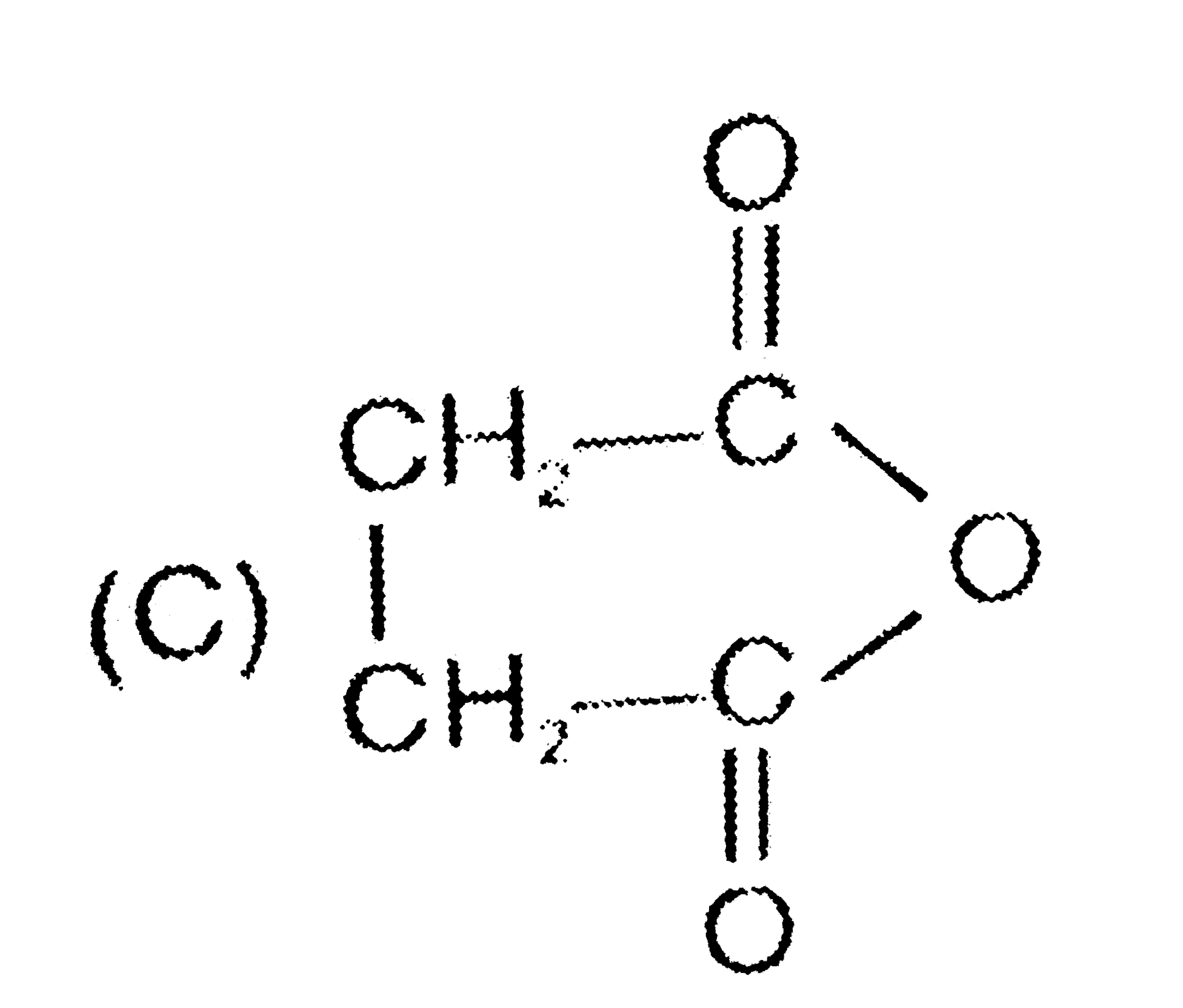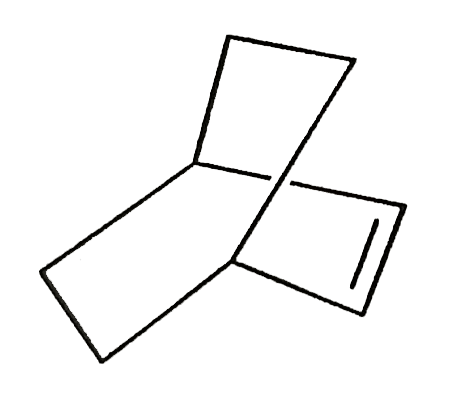CH2−CONH2|CH2−CONH2P2O5−−→Δ(P)H3O⊕−−−→Δ(Q)
The product (Q) is
CH3−CH2−COOH
CH2−COOH|CH2−COOH

CH3−COOH
The correct Answer is:C
To solve the problem step by step, we will analyze the reaction of the compound with P₂O₅ and then with H₃O⁺ under heat.
Step 1: Identify the starting compound
The starting compound is given as CH₂CONH₂, which is an amide.
Step 2: Reaction with P₂O₅
When CH₂CONH₂ is treated with P₂O₅ in the presence of heat, P₂O₅ acts as a dehydrating agent. This means it will remove water molecules from the compound.
- Dehydration Reaction: The amide group (CONH₂) will lose two water molecules (H₂O) upon heating with P₂O₅, converting the amide into a nitrile (CN group).
The reaction can be summarized as:
CH2CONH2Δ,P2O5−−−−→CH2CN
Step 3: Formation of Product P
The product formed after this dehydration step is a nitrile, specifically CH₂CN.
Step 4: Hydrolysis of the Nitrile
Next, the nitrile (CH₂CN) undergoes hydrolysis in the presence of H₃O⁺ (acidic conditions) and heat.
- Hydrolysis Reaction: The nitrile group (C≡N) will be converted into a carboxylic acid (COOH) through hydrolysis.
The reaction can be summarized as:
CH2CNΔ,H3O+−−−−−→CH2COOH
Step 5: Final Product Q
After hydrolysis, the product formed is CH₂COOH, which is a carboxylic acid.
Step 6: Identify the final product
However, if we consider the reaction conditions and the possibility of further dehydration, we can also consider that the carboxylic acid can lose a water molecule upon heating, forming an anhydride.
The final product Q can be represented as:
CH2COOCH2
Conclusion
Thus, the product Q is:
CH2COOCH2
The starting compound is given as CH₂CONH₂, which is an amide.
When CH₂CONH₂ is treated with P₂O₅ in the presence of heat, P₂O₅ acts as a dehydrating agent. This means it will remove water molecules from the compound.
The reaction can be summarized as:
CH2CONH2Δ,P2O5−−−−→CH2CN
The product formed after this dehydration step is a nitrile, specifically CH₂CN.
Next, the nitrile (CH₂CN) undergoes hydrolysis in the presence of H₃O⁺ (acidic conditions) and heat.
The reaction can be summarized as:
CH2CNΔ,H3O+−−−−−→CH2COOH
After hydrolysis, the product formed is CH₂COOH, which is a carboxylic acid.
However, if we consider the reaction conditions and the possibility of further dehydration, we can also consider that the carboxylic acid can lose a water molecule upon heating, forming an anhydride.
CH2COOCH2
Thus, the product Q is:
CH2COOCH2
Topper's Solved these Questions
- BOOK - RESONANCE ENGLISHCHAPTER - CARBONYL COMPOUNDS (ALDEHYDES & KETONES ) & CARBOXYLIC ACID EXERCISE - Part -III31videos
CARBONYL COMPOUNDS (ALDEHYDES & KETONES ) & CARBOXYLIC ACID
- BOOK - RESONANCE ENGLISHCHAPTER - BIOMOLECULES & POLYMEREXERCISE - ORGANIC CHEMISTRY(Biomolecules & Polymer)34videos
BIOMOLECULES & POLYMER
- BOOK - RESONANCE ENGLISHCHAPTER - CHEMICAL KINETICSEXERCISE - PHYSICAL CHEMITRY (CHEMICAL KNIETICS & RADIOACTIVITY)49videos
CHEMICAL KINETICS
Similar Questions
Knowledge Check
- Question 1 - Select One
H3C−O∣∣C−CH2−CH2−CH2−CH2−⊕PPh3Bϴu⊕Li−−−−−→Δ(X), Major product (X) is:
A B
B C
C D
D
- Question 2 - Select One
Ph−CH2−O∣∣C−OH(1)NaOH,CaO,Δ−−−−−−−−−−−−−−→(2)H⊕(A)
Product (A) is :APh−CO2HBPh−CH2−OHCPh−CH3D
- Question 3 - Select One
CH3−CH∣Br−CH2−O∣∣C−CH3N2HO(4),ϴOH−−−−−−−−−−−→Δ Product:
A B
B C
C D
D
RCH=CH2(1)O3−−−−−−−−−−−−→(2)H2O\(Zn)(A)H2O−−−−−−→LiAIH4(B)
Product (B) isView SolutionCH3−O∣∣C−CH2−CH3∣C∣CH3−CHOKOH,H2O−−−−−−→Δ product (C7H10O) :
View Solution (i)O3−−−−−−−−→(ii)Zn−H2O¯:OH−−→Δ NO. of aldol condensation product.View Solution
(i)O3−−−−−−−−→(ii)Zn−H2O¯:OH−−→Δ NO. of aldol condensation product.View SolutionIn the given reaction the products is :
CH3−CH2−C∣∣O−OCH3+CH3−C∣∣O−OCH3(1)CH3OΘNa+−−−−−−−−−−→(2)CH3OHoversert(H2O)−−→Δ productView SolutionCH3−CH2−CH2−CH2−CH3∣C∣CH3−CH2−OHH+−−→ΔA(major) product (A) is :
View Solution

